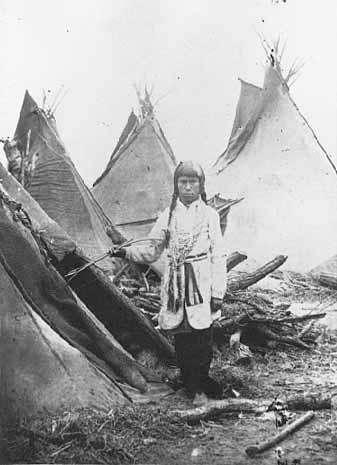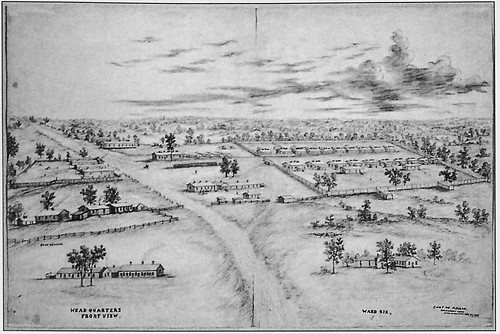Winner asks herself a question I'd rather not answer. 'Is it too simple,"she writes, "to suggest that she encountered God's forgiveness--and that an encounter with God's forgiveness does indeed inspire urgent feelings?" And then, bravely, she enters that woman's mind:
I just experienced something amazing. I have to tell someone. I'm not even totally sure what the experience was, I just know it was--everything."Is it too simple to believe that the baptisms of almost 300 Dakota warriors slated to be hanged was not delusion? Why do I find it so hard to believe--like so many white folks still mourning the horrifying loss of their families--that God would come to a prison full of heathen killers? that he brought his grace to warriors chained to the floor? that he listened to frantic Dakota prayers? Why is it somehow easier for me to believe that God almighty wasn't paying attention when the men with a date with the hangman were baptized? Is their redemption so hard to believe? And if for me it is, then why?
Just six days after the Mankato hangings, the St. Paul Press editorialized this way:
As long as an Indian lives in our State, it will be to all the rest of the world a "Haunted House," through whose empty corridors the hoot of owls will echo the shrieking spectre of midnight murder, and men will pass by for other lands, and women will hug their babes closer to their breasts when they hear the ill-omened name of Minnesota. The Indians must be removed, every one of them.The government banished its first nations population. More than 1600 old men and women and children were swept off their native land after the outbreak and imprisoned in what some call a concentration camp at Ft. Snelling, a dark place haunted by death. It was cold and it was wet, and the Dakota people were underclothed and undernourished, living in spaces so tight that disease went on a rampage. In those four months, more than 130 Dakota people perished.
 |
| Dakota boy at Ft. Snelling |
Gabrield Renville, a "mixed-blood" Dakota who would become a leader of his people, remembered the Ft. Snelling imprisonment this way: "Amid all this sickness and these great tribulations, it seemed doubtful at night whether a person would be alive in the morning."
Amazingly, when the Ft. Snelling people heard of the mass conversions of the warriors at Mankato--their husbands, fathers, and sons--hundreds there too asked also to be baptized. Hundreds. For those dark winter months, fervent spirituality reigned among the captive Santee warriors at the makeshift Mankato prison, as well as their families in the detention camp at Ft. Snelling. The Christian faith grew in the darkness of all that suffering and all that death.
When finally the ice disappeared from the Mississippi, all of them--the Mankato prisoners first, then the Ft. Snelling families--were packed on steamboats. They had no idea where they were going.
The men were taken to Davenport, Iowa, where Ft. McClellan, then teeming with Civil War recruits, created a stockade to hold them, Federal companies were assigned to guard them. Some missionaries who'd been with the Dakota since their days along the Minnesota River stayed there at Ft. McClellan, conducting worship services and teaching the warriors to read and write and sing hymns in their language.
 |
| Ft. McClellan. The stockade on the far left housed the Dakota War prisoners. |
a new company assigned to this duty, at first treated the prisoners with a good deal of severity and harshness. But a few weeks sufficed to change their feelings and they were led to pity and then respect those whom they had regarded as worse than wild beasts.Something incredible had clearly occurred in the lives and hearts of Dakota warriors who not that long before had gone to war and murdered their neighbors, the men, women, and children of the Minnesota River valley.
There's more to the story. A thousand Dakota old men and women and children were packed onto steamboats at Ft. Snelling and brought down the Mississippi too. Forever banished from the new state of Minnesota, they too had no idea where they were going.
Everything I've written is part of the history of River Bend Church, that little church on a hill just outside of Flandreau, "The Oldest Continuously Used Church in South Dakota." As a people, its founders knew what I've told you and much more, I'm sure.
Visit the little church sometime--now perhaps, during Lent. You could do worse. We all could.
But there's more to the story.


No comments:
Post a Comment